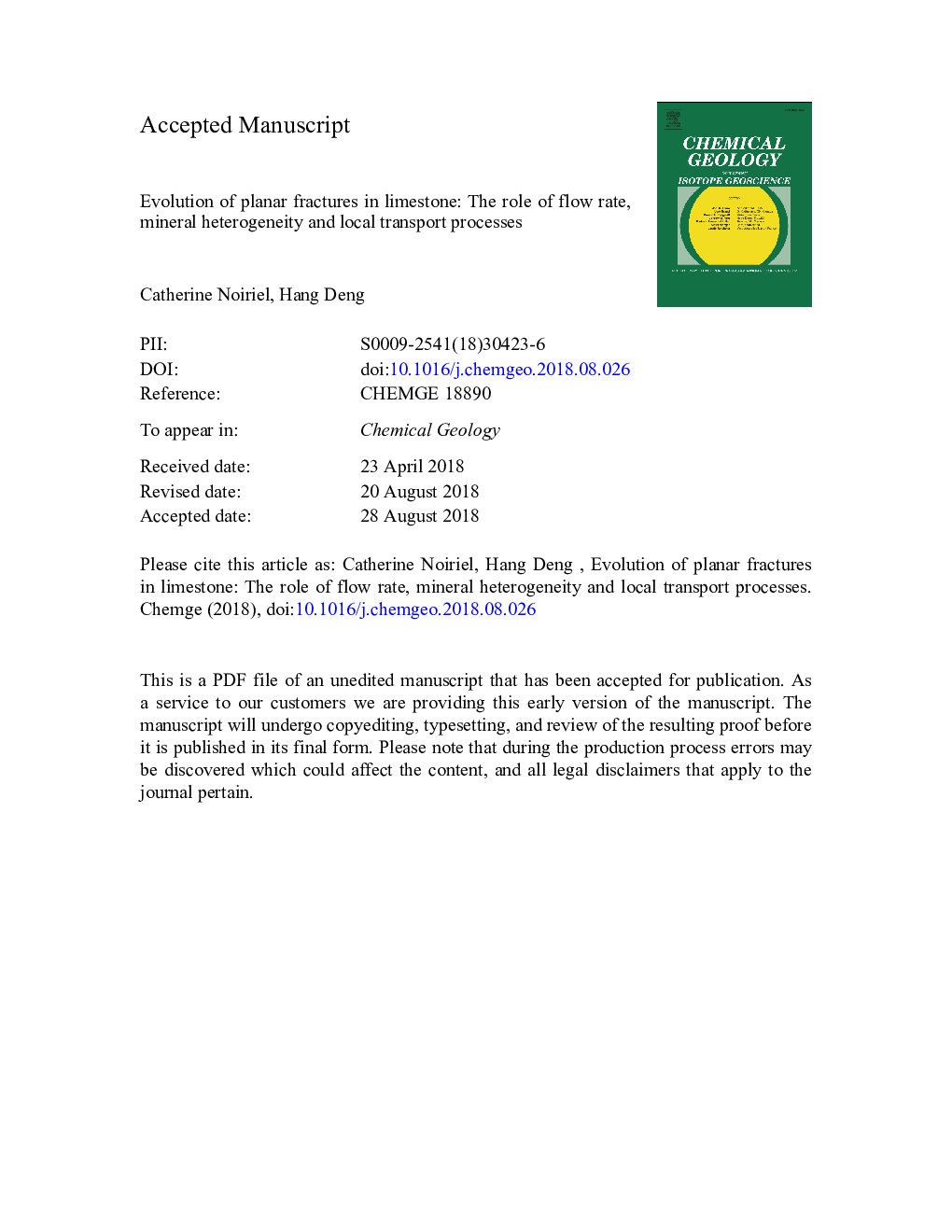| Article ID | Journal | Published Year | Pages | File Type |
|---|---|---|---|---|
| 10224332 | Chemical Geology | 2018 | 49 Pages |
Abstract
The processes that affect the evolution of fracture geometry and reactive transport in limestone fractures were evaluated using an integrated experimental and modeling approach. Flow-through experiments were performed to investigate the alteration of three artificially made planar limestone fractures, which were exposed to HCl-acidified water flow (pHâ¯3.8â¯Â±â¯0.1) at three different rates. Reactive infiltration instability developed in the fractures because of small fracture aperture variations and naturally occurring heterogeneity in the rock, i.e., the presence of clay spots of higher porosity. The dissolution regime changed from conical to dominant and ramified wormhole with increasing flow rate, i.e., Péclet number. Maps of fracture aperture obtained from X-ray micro-tomography imaging, together with measurements of permeability and analyses of fluid chemistry, provided experimental constraints for modeling. Numerical simulations were performed using a 2.5D continuum reactive transport model to examine the development of flow patterns and the reactivity and permeability evolution over time, and to interrogate the impacts of fluid reactivity, mineral heterogeneity and diffusive boundary layer. The modeling results showed that fracture alteration is very sensitive to initial fluid reactivity and mineralogical heterogeneity, in addition to flow rate. The changes of local transport processes during fracture opening also affected the reactivity of the fractured samples.
Related Topics
Physical Sciences and Engineering
Earth and Planetary Sciences
Geochemistry and Petrology
Authors
Catherine Noiriel, Hang Deng,
